This article highlights the remarkable status of women in ancient Egypt, where they were honored as life-givers, leaders, and vital participants in all aspects of society. Unlike many ancient civilizations, Egyptian women had legal equality with men, with rights to own property, divorce, and work in esteemed professions like medicine, law, and religion. From powerful queens like Hatshepsut and Cleopatra to everyday citizens, women influenced royal affairs, commerce, education, agriculture, and spiritual life. Deeply woven into rituals, funerary customs, and artistic depictions, femininity in ancient Egypt was not only respected but celebrated as sacred and transformative.
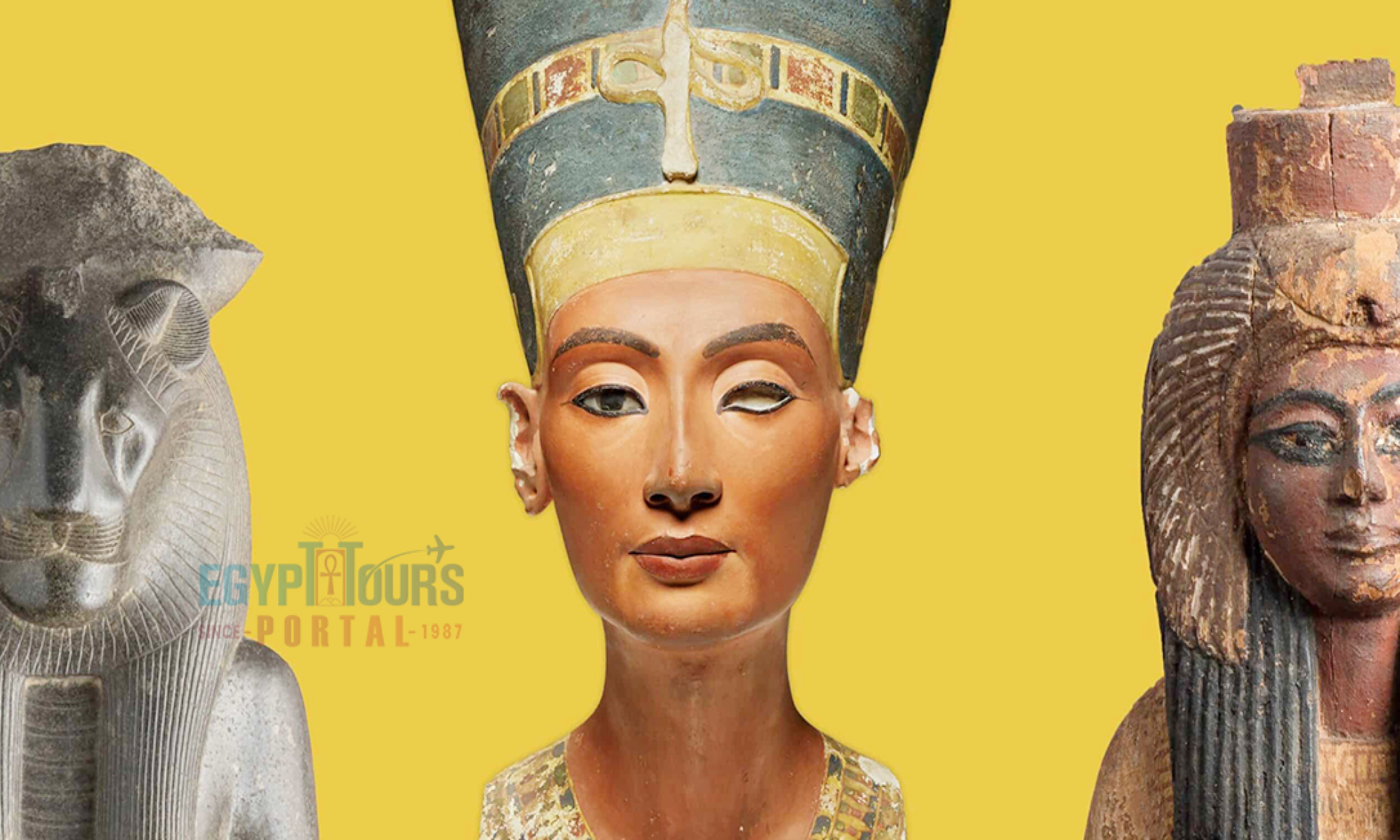
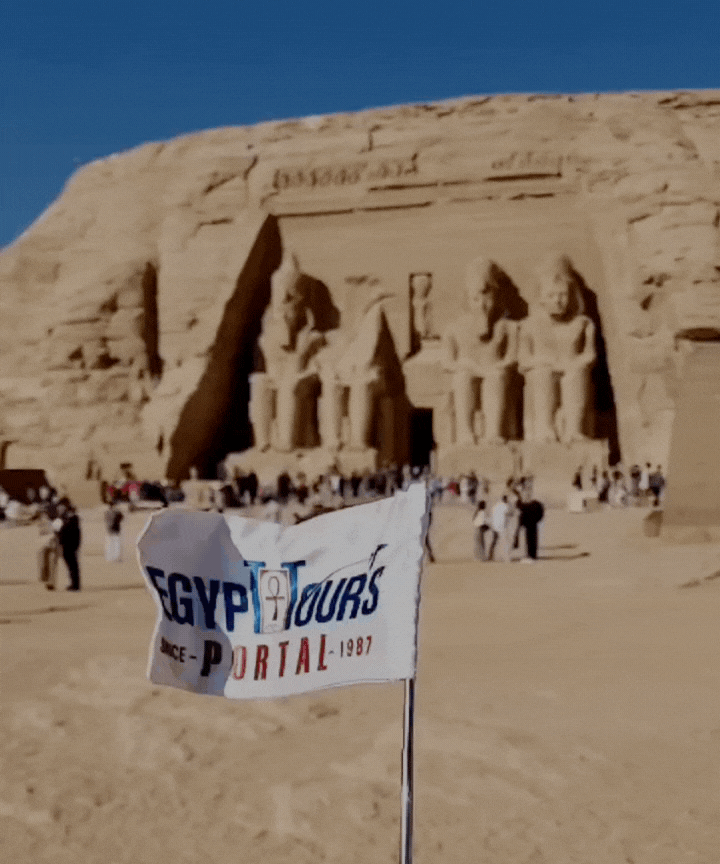
Women in ancient Egypt were the cornerstone of the entire fabric of the ancient Egyptian society, religion, power structures, and even daily life, as they were considered to be the source of life and the embodiment of nutriment, responsibility, and intellect. Ancient Egyptian women were ahead of their time as they were regarded as equal to men in every single aspect and right aside from their occupation. Women were responsible for the household and were the backbone that maintained the stability and harmony of the nation through their careers as brewers, musicians, artisans, doctors, scribes, and many others, which involved having more authority over men most of the time.
The status and rights of ancient Egyptian women were more advanced, progressive, and well-structured than those of most the many other ancient civilizations. Throughout different periods of ancient Egyptian history, women enjoyed a respected degree of social, legal, and economic rights, which were more advanced than in some later cultures. They were equal in rights when it came to ownership of any kind of property and in court cases.
The power of each woman depended solely on her social class and not her sex or gender. But no one can deny the fact that the ancient Egyptian society was patriarchal, dominated entirely by men, as there were a few number of women who held several highly important positions in the administration process, and there were fewer female rulers and pharaohs in the entire dynastic history of Egypt.

The Status of Women in Ancient Egypt was not entirely free from their common gender-based expectations and norms, but their status and rights were comparatively and incredibly progressive for their time. The legend of Isis and Osiris is the ultimate evidence that showcases the high status of women, as Isis was the reason behind many of the gifts that were given to humanity, which included equality between men and women.
The overall status of women was very advanced when compared to other cultures and civilizations, even during later time periods. Women had greater rights than women living in the current moment. From the Old Kingdom (2700 – 220 BC) to the Ptolemaic Dynasty (323-30 BCE), Women in ancient Egypt enjoyed equality and respect as seen in the last ruler of Egypt Queen Cleopatra VII (51-30 BCE), who was the most clear representative of equality in that time period.
In ancient Egypt, women were revered and respected, as seen across all the works of art and literature. After Egypt was taken by the roman The status of women began to decline and it got worse with the rise of many Abrahamic religions who blamed women as the descendant of Eve who was responsible for the fall of man plus they were not to be trusted and needed male supervisor which goes against the common belief in ancient Egypt that spanned for almost 4000 years.

Under the law, ancient Egyptian women as the same rights as men. The social class and the period played great roles in determining the extent of the rights and privileges of each woman. The statues of women were influenced by cultural norms, religious beliefs, and the ruling power at the time.
Women had a highly respected statues in the history of Egypt that spanned for over 5000 years as their enjoyed the same privileges, rights and opportunities when it came to legal rights as they had the power to own, buy, rent, sell, and mortgage any land, homes, and businesses plus inherit or pass down their wealth to their children or any next of ken plus adopt a child on their own in her own named. They thrived under the umbrella of the many customs and traditions of ancient Egypt that ensured their safety and prosperity.
Ancient Egyptian women were involved in several economic & business opportunities and activities that included trade, manufacturing, and agriculture. Many women played the role of the gods’ wives, plus significant roles in many temple rituals and ceremonies. Many women from wealthy families had the privilege of getting a formal education, by being taught how to read and write, plus some became very skilled and professional in their own chosen field of study.
Women in ancient Egypt had legal protection that guarded them from any kind of Abuse and mistreatment, as any kind of slander or assault against any woman was punished by the law. Ancient Egyptian women had a strong cultural and intellectual effect and significance on ancient Egyptian society as they were poets, musicians, and scribes.

Ancient Egypt women were very determined and wielded power in a male-dominated world, leaving a glorious, lasting legacy as powerful, capable leaders and rulers of ancient Egypt. Their marvelous contributions and accomplishments are demonstrated across the many exceptional women who have reached the throne and display very strong leadership and incredible success.
The queens of ancient Egypt lived in total luxury and comfort where they lived in great palaces that even extended across 30,000 square meters (30 hectares) which is filled with great spacious apartments, audience chambers, conference rooms, a throne room and receiving hall, libraries, gardens, a festival hall, kitchens, storerooms, a harem of servants, and a temple to the god Amun.
The royal women who lived in these palaces enjoyed a much better standard of living, but they had their role in keeping and fulfilling the concept of maat. Across the dynastic history of Egypt, the great, main, and principal wife varied with the pharaoh and at one point shared power and influence as seen in Queen Tiye (l. 1398-1338 BCE), the wife of Amenhotep III, who acted as a diplomat and took part in the affairs of state.
Queen Nefertiti (1370-1336 BCE), the wife of Akhenaten, helped her husband run the country when her abandoned his ruling duties to focus on his monotheistic religion. Several great women were able to step up and make a marvelous influence over their court, husbands, and the country. Queen Merneith (3000 BCE) acted as the regent queen to her son, Queen Sobeknefru (1807-1802 BCE), as the first confirmed female pharaoh in ancient Egypt who ruled the country and took the throne in the Middle Kingdom, which made any regard for the common traditions.
One of the greatest and most successful rulers was Queen Hatshepsut (1507–1458 BCE) was one of the most famous and successful female pharaohs. Hatshepsut ruled as the fifth pharaoh of the 18th Dynasty. And Queen Tausret (1191–1189 BCE) was the last known ruler of the 19th Dynasty and the only confirmed female pharaoh of the New Kingdom.

Ancient Egyptian women had many roles in many aspects of ancient Egyptian society, life, and religion, despite the many limitations and differences between all the social classes that enabled them to enjoy many rights and privileges. The main role of women was in their homes and the well-being of their husbands and children, and in the absence of that, they managed some businesses and farms.
The lady of the house supervised the servants of the household and the education of her sons and daughters. In the old kingdom, many wealthy women owned their households. There was a separation between the sexes, where men were served by men while women were served by women. Wealthy women were known to hire nannies to take care of their kids while working as perfume-makers, acrobats, dancers, singers, professional mourners, and musicians, plus while being employed in courts and temples.
In the new kingdom, ancient Egyptian women occupied many magical jobs like doctors, scribes, and many other prestigious positions. Many women across the history of Egypt were able to achieve great titles of power and honor, which are Overseer of Female Physicians, Director of the Dining Hall, Judge, Vizier, and Overseer of Funerary Priests.
Learn about all the many Jobs of the ancient Egyptian civilization
Read More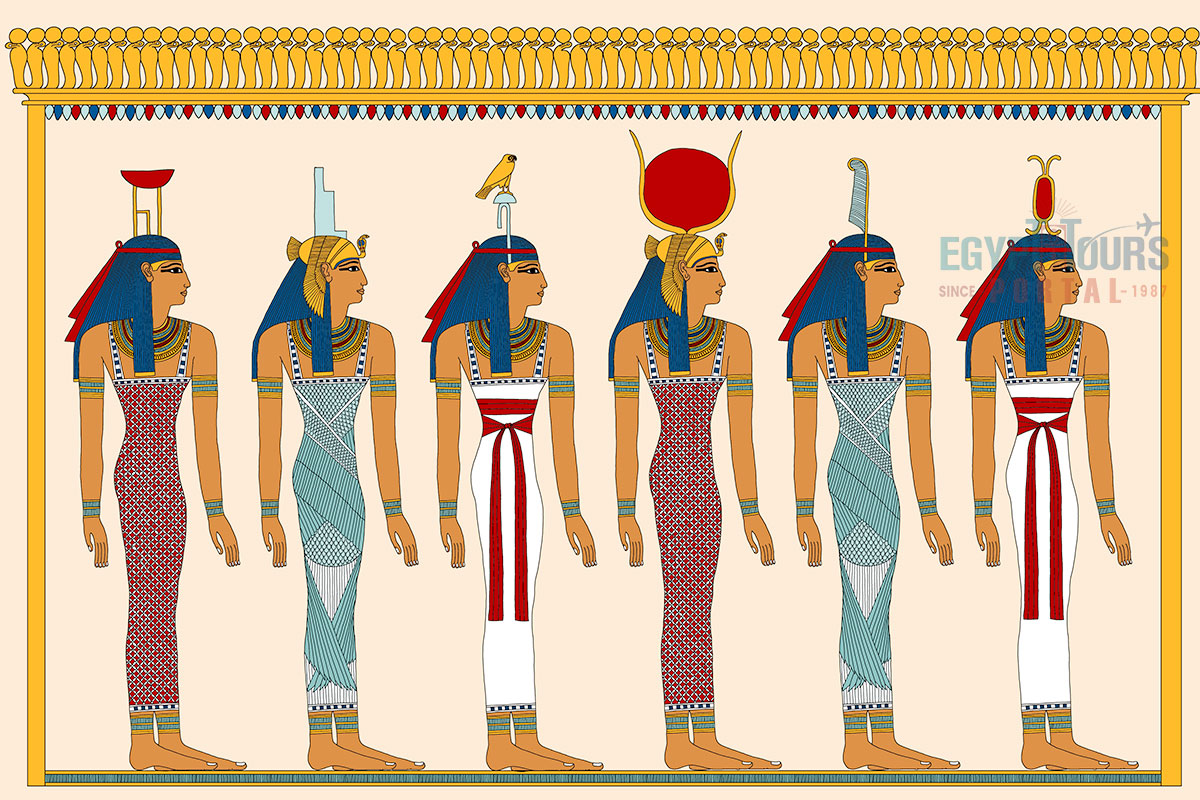
In ancient Egyptian mythology and religion, women were depicted heavily in the images of influential goddess like Isis, goddess of magic, motherhood, and mysticism, Hathor, the goddess of nourishment and love, Bastet, the cat goddess-protector of the home, Sekhmet, goddess of war and wrath, Seshat was the goddess of the written word and librarians, Tayet the goddess of weaving, Tefnut the goddess of moisture, and many more.
Egyptian religion was created on the foundation of elevating and honoring the feminie, as many great female goddess like goddess Neith who brings creation of the world & the beginning of time, the primordial waters are personified as Nu and Naunet, a balance of the male and female principles in harmony plus some of the greatest tales and legends ever told in the history of Egypt. One of the most important positions a woman could hold in the Middle Kingdom (c. 2055–1650 BCE) was the god’s wife of Amun.
The title of God’s wives, which began in the Middle Kingdom, was an honorary title given to women from the Upper classes who assisted the high priests of ancient Egypt in some ceremonies. During the New kingdom, the title of god’s wife represented ultimate power for which in some cases represented power that was equal to the king. In the priesthood of a feminine deity, the women were usually hired as priests and scribes. Many males and clergy headed the cult of Isis, while the cult of male deities, for example, only hired male priests and scribes. The ancient Egyptians sought to always maintain balance through creating two titles: the God's Wife of Amun and the High Priest of Amun, which were balanced in power to create a sense of harmony.
Women played key roles in these festivals, where women represent the core of the religion through music and theatrical displays, which include The Lamentations of Isis and Nephthys at the festivals of Osiris. The responsibilities of priestesses were to take care of the temples, the statues of the deity, plus help the visitors and worshippers through repaying debts, giving thanks, providing counsel on many problems, and dream interpretation. It was the main duty of women to erect and clean the personal shrines of the deities, aside from what they usually did.
In ancient Egypt, Wise women played a role in creating portals to the afterlife, where the dreams are interpreted through the knowledge of the gods and the dead who were able to communicate with the living. They worked as skilled interpreters who wished to understand the meaning behind the symbols and events in the dreams in order to understand the current messages and predict the future. These seers held great power and respect, as seen across the temple of Hathor at Dendera and the temple of the oracle.
Learn all that you can about the Religion of Ancient Egypt.
Read More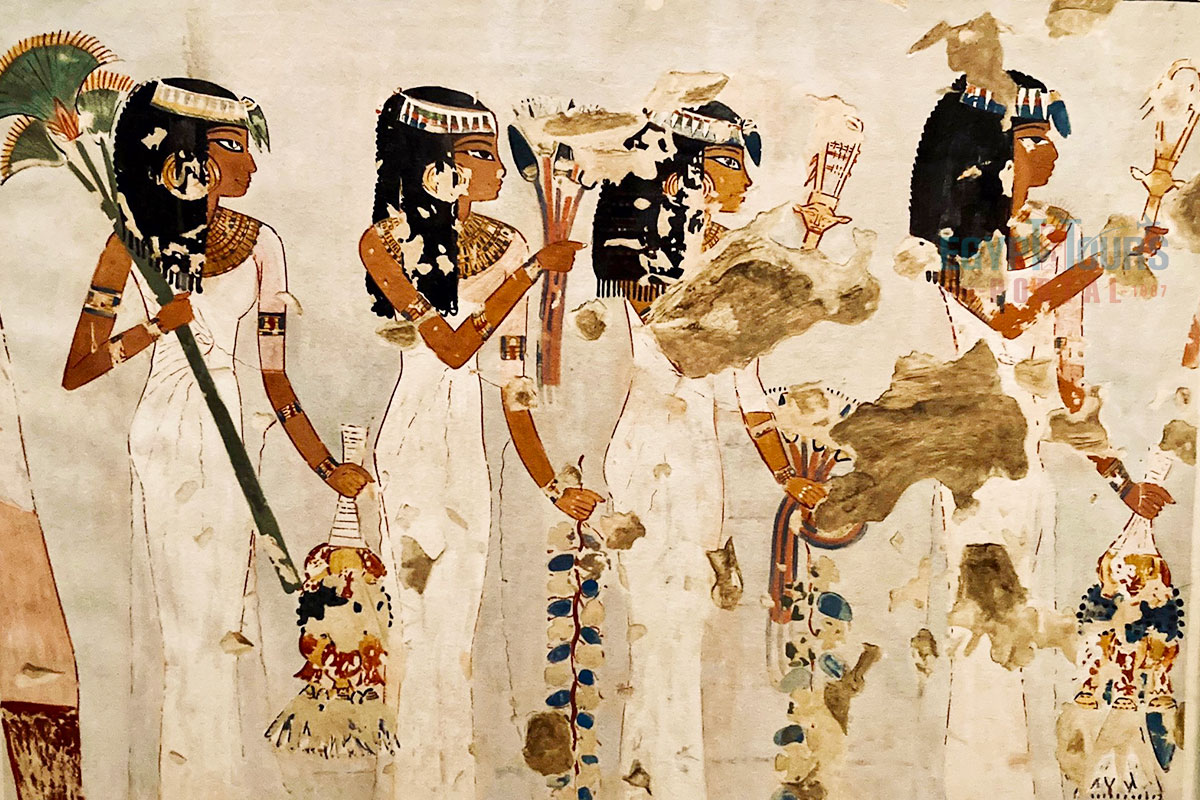
In ancient Egyptian society, women played various roles within the household, where they mainly were the manager and caretaker of the ancient Egyptian house, “ The Mistress of the House” which was considered to be her palace while enjoying a considerable amount of independence and power. They were primarily responsible for managing domestic affairs, including cooking, cleaning, and raising children.
Women were also involved in textile production, spinning, and weaving to produce clothes for themselves, husbands, and children. Besides household duties, some women engaged in activities beyond the home, such as participating in religious ceremonies and festivals, and could serve as priestesses.
Some goddesses also held significant positions in the Egyptian pantheon, reflecting the high regard for female deities. Wealthy women owned their own houses in the old kingdom, and they had several women servants. The status of mothers was very revered, as Egyptian mothers were prominently displayed more than the fathers across great monuments and literature.
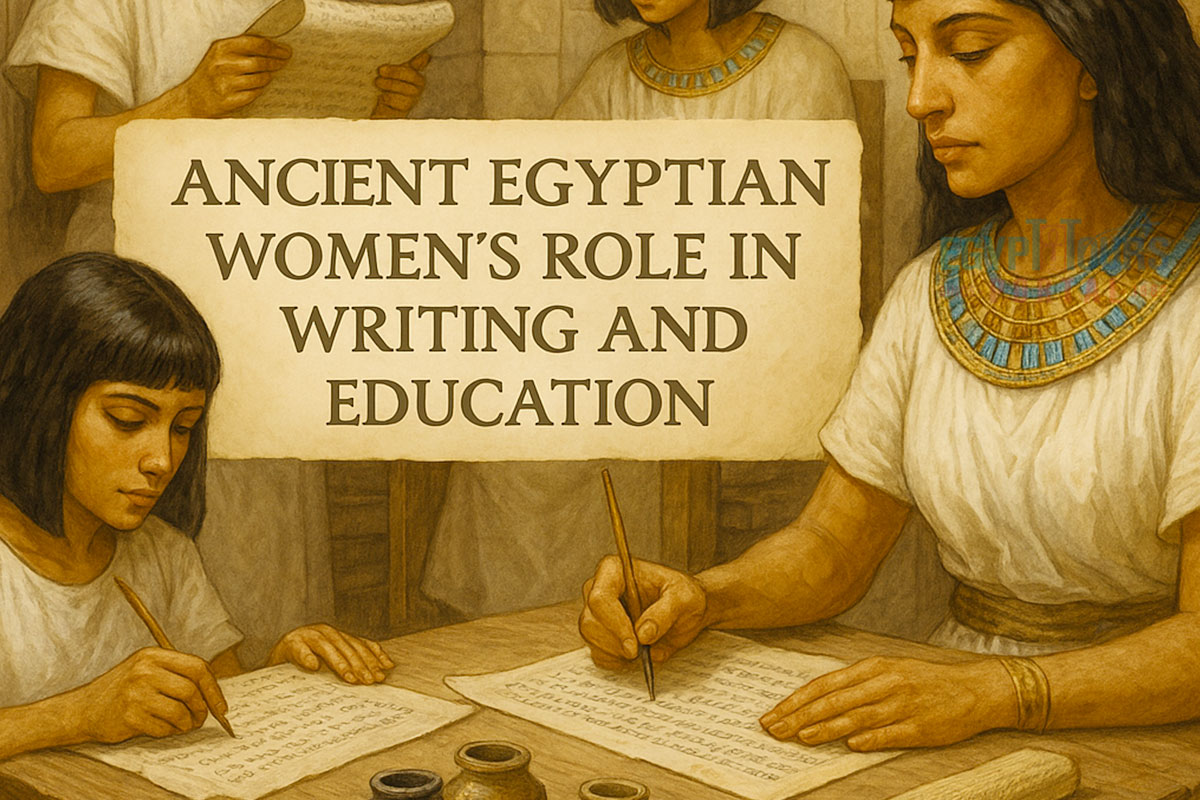
Education was not equally accessible to all women in ancient Egypt. While elite women from wealthy families might have received a formal education, the majority of women were educated at home. They learned practical skills and religious knowledge from their mothers and female family members. Some exceptional women became skilled scribes and were involved in record-keeping, particularly in religious and judicial institutions.
The process of becoming a scribe was very hard and long, so it made sense that ancient Egyptian scribes would usually come from families of scribes where the children were expected to follow in their mother’s and father’s occupation. These women were responsible for writing, editing, and preserving highly important documents and texts. Becoming a scribe was the key to being a priest after years of dedicated hard work and study, plus after entering the priesthood, everyone will get to become a skilled physician.

Talented ancient Egyptian women worked as concubines who we incredibly skilled in music, conversation, weaving, sewing, fashion, culture, religion, and the ancient Egyptian arts. Women in ancient Egypt actively engaged in artistic pursuits as they were painters, sculptors, and craftsmen. Evidence of women's artistic contributions has been found in various tombs and temple complexes. Women participated in ancient Egyptian entertainment in the form of musical performances and dance, both in religious rituals and secular entertainment for a king or deity. They played instruments like harps, flutes, and drums, and their dances were an essential part of religious ceremonies and celebrations.
Discover the many different craftsmen of the ancient Egyptian civilization
Read More
Women enjoyed great economic freedom and participated in ancient Egyptian trade and commerce, especially in local markets. They were involved in selling goods they produced, such as textiles, pottery, and food items. When it came to commerce as they had the power to own, buy, rent, sell, and mortgage any land, homes, and businesses, plus inherit or pass down their wealth to their children. Women could be found at bustling marketplaces, where they traded goods, negotiated prices, and engaged in economic transactions.
Plus, they engaged in buying and selling goods, both in specialized marketplaces and in informal settings. Women would often trade a wide range of products, including foodstuffs, textiles, jewelry, cosmetics, and other everyday items. Ancient Egyptian women were skilled in various crafts and artisanal activities where they contributed to the production of goods like pottery, weaving, and jewelry-making, which were essential for trade and commerce within Egypt and with other civilizations.
Some women operated as independent entrepreneurs by being involved in manufacturing, trade, or retail activities. Women in ancient Egypt had the right to enter into contracts, borrow money, and conduct financial transactions. These legal rights allowed them to engage in commerce independently or in partnership with male family members.
Learn all you can about the rich economy of the ancient Egyptian civilization
Read More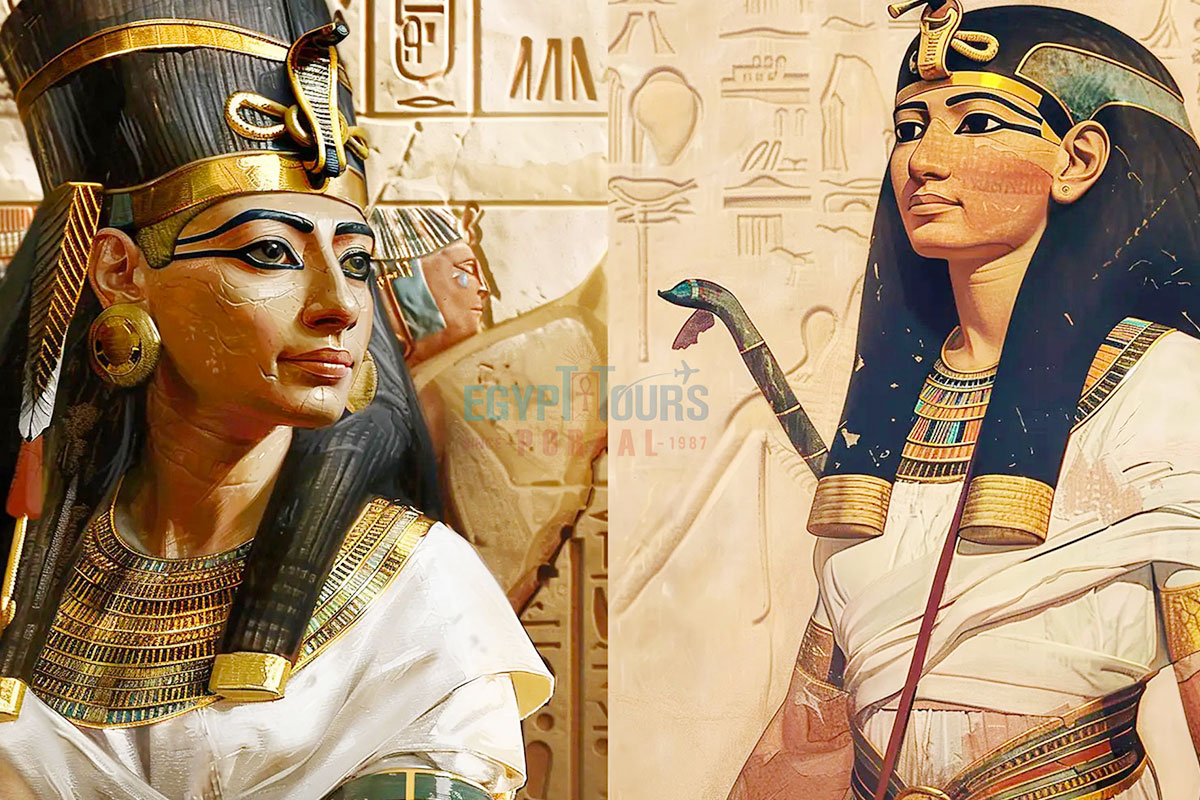
Ancient Egyptian women's clothing varied based on their social status and personal preferences. Common attire for women included a simple sheath dress made of linen. Women paid great attention to personal grooming and beauty. Wealthy women wore more elaborate and finely woven garments, often accessorized with jewelry. Women had the gift of crafting their Clothing, which includes:
The most common garment worn by ancient Egyptian women was the kalasiris, which was a long, straight, sleeveless dress entirely made of lightweight linen that reached from the shoulders to the ankles. Another popular style was the sheath dress, which was form-fitting and sometimes had straps that crossed at the chest. Some women wore tunics, which were similar to kalasiris but shorter, reaching just below the knees. For colder weather or formal occasions, women would wear shawls or capes over their dresses. Jewelry was an essential part of ancient Egyptian women's attire.
They adorned themselves with necklaces, bracelets, anklets, earrings, and rings, often made of precious metals and gemstones. Jewelry not only served as adornments but also held symbolic and religious significance. Women often wore wigs made from human hair or plant fibers to protect their heads from the sun and as a fashion statement. Wigs allowed them to maintain elaborate hairstyles without damaging their natural hair. Egyptians generally went barefoot, but women of higher social classes might wear stylish footwear like sandals or slippers made of leather or papyrus.
Ancient Egyptian women used cosmetics such as kohl for eye makeup and red ochre for lip color. Kohl not only enhanced beauty but also had protective qualities against the harsh desert sun. To protect their skin from the dry and hot climate, women used oils and creams made from natural ingredients like olive oil and aloe vera. Henna was used to dye their hair, skin, and nails reddish-brown.
It was particularly popular during festive occasions and celebrations. Fragrances and perfumes were highly valued in ancient Egypt. They were used to scent the body and hair, and both men and women regularly applied perfumed oils. Bathing and personal hygiene were crucial aspects of Egyptian life.
Wealthier women would bathe frequently and use scented oils in the bath. They also used scented oils as moisturizers. While not as common as in some other ancient cultures, tattoos were used by some Egyptian women, especially those in certain religious roles. Tattooing was often done on the arms and breasts and had religious or protective significance.

Women enjoyed legal rights and could own property, enter into contracts, and initiate legal actions. In cases of divorce, they could claim their rightful share of marital property. Women had the right to appear in court and present their cases. In matters of inheritance or disputed property, they could seek resolution through the legal system.
It came to legal rights as they had the power to own, buy, rent, sell, and mortgage any land, homes, and businesses, plus inherit or pass down their wealth to their children or any next of kin, plus adopt a child on their own in their name. Women, like men, enjoyed legal protections against crime and abuse. Ancient Egyptian law condemned assault, theft, and other forms of mistreatment, and perpetrators could face punishment.

Women played significant roles in society, and their contributions were often recorded in various forms of writing and record-keeping. Some women were employed as scribes and administrative assistants who were responsible for writing and maintaining records related to various aspects of life, such as trade, taxation, and legal & marriage matters.
Marriage contracts and property deeds also included information about women. Wealthy women from noble families occasionally engaged in letter-writing, often corresponding with family members or close friends, which was later the source of great information.

Ancient Egyptian women played a significant role in agriculture and food production, which was a crucial aspect of their society and economy. The ancient Egyptian viewed agriculture as a form of art who took part as a form of Farming and Harvesting who participated in agricultural activities. They worked in the fields, planting and harvesting crops such as wheat, barley, and flax.
Women worked hand in hand with their husbands, who were responsible for food processing, such as grinding grains and baking bread. The production of beer was a substantial economic activity in ancient Egypt, where Women were central to this process, as brewing beer was often considered a household responsibility. Women were involved in the care of domesticated all the ancient Egyptian animals, such as poultry and small livestock, as they were responsible for feeding, milking, and tending to the animals' needs.
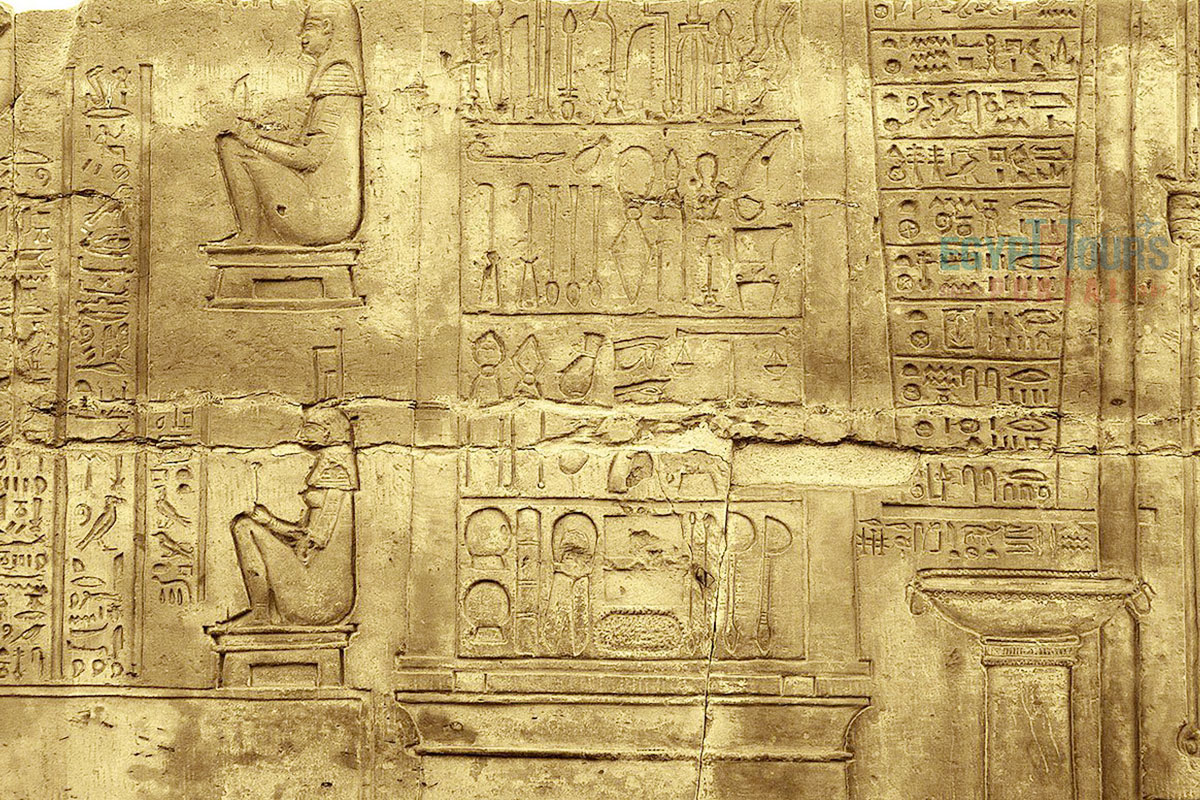
After becoming a scribe, then a priest, a woman has the chance, like any man, to become a skilled physician. Some women who were very important to ancient Egyptian medicine were involved in healing practices and served as midwives, herbalists, and nurses. They played a significant role in caring for the sick and assisting in childbirth. In ancient Egypt, female doctors were very respectable, and the medical school of Alexandria was attended by many students from different countries.
The legendary Agnodice, the Greek physician, was denied education in medicine in the great city of Athens due to her sex, where she studied in Egypt in the 4th century BCE before returning to her city disguised as a man to become an incredible doctor. Women were known to pass down medical knowledge from generation to generation, and their expertise in herbal remedies was highly valued.

Mourning and Funeral Rites were handled by Women who played a central role in mourning the deceased and performing funerary rituals. They were often seen lamenting at funerals, expressing grief through songs and gestures. Ritual Specialists were often women who served as ritual specialists in funerary ceremonies and were responsible for conducting specific rituals to ensure the deceased's safe passage to the afterlife.
Women sometimes worked as professional mourners or musicians during funerals, contributing to the solemnity of the occasion and creating a mournful atmosphere. Women from elite and wealthy families often had their tombs inscribed with biographical details and depictions of their lives. These inscriptions provided information about their family, social status, and religious beliefs. Women played a role in the decoration and construction of tombs where they added inscriptions, religious ancient Egyptian texts, or artistic elements to the burial chamber.

Women were considered to be legally capable during the time of ancient Egypt and didn’t require any kind of supervision, consultation, or approval from any man before pursuing any form of action. This order of things applied to marriage, personal activities, and any other area in the lives of others. Women had the power to choose who to love and marry, there were no arranged marriages by the males of the families. Divorce was a right for every married woman as there was no stigma to the concept of divorce, despite that the ancient Egyptian society encouraged life-long marriages.
During ancient Egypt, marriage was a simple social convention based on agreement, which was negotiated by the suitor with the family of his future wife, where objects of value in the form of gifts were offered to the bride-to-be. All ancient Egyptian couples entered a prenuptial agreement that took the side of the woman. If the man requested a divorce, then he will lose all rights to reclaim his gifts, and his ex-wife will get alimony until she gets remarried or he is unable to pay due to any valid reason.
The custody of the children will transfer to the mother, and the ownership of the house will go to her unless the house is owned by the husband’s family. Birth control and abortion were available for unmarried and married women. Women's Virginity was highly rewarded and prized by men who initiated marriage, but it was not required for a woman to be a virgin on her wedding night, as any ancient Egyptian sexual experience before marriage was not a matter of concern. The ancient Egyptians believed that a stable marriage was the key to a harmonious community, where ancient Egyptians continued their life in the afterlife in the field of reeds, and one’s marriage was truly everlasting.
Ancient Egyptian art stands as solid proof that happy marriages and a stable community were idealized as deeply shown across all the magical Reliefs, paintings, and inscriptions countless depictions of husbands and wives living and sharing everything in harmony which including eating, dancing, drinking, and working the fields together. Love is the elixir that gives life meaning, which is shown in all the ancient Egyptian love poems where both male and female swear eternal love and express their joy in every aspect of their life while being with their family or friends.
Women in ancient Egypt enjoyed a level of equality and rights that set them apart from many other ancient civilizations. Their roles extended beyond the traditional boundaries of household responsibilities, allowing them to participate actively in various aspects of society that included intellectual, commercial, religious, medical, and more.
While gender roles were still present, the ancient Egyptians recognized the importance of women and valued their contributions to maintaining a harmonious and prosperous society. We will deliver a majestic Egypt tour and Nile river cruises that will explore all the magnificent sights
Private 4 Days Cairo Tour Packages 4 days Cairo Egypt tour package will offer a bles...
Tour Location: Cairo – Giza...
Stunning 5 Days Cairo and Alexandria Tour Package 5 days Cairo and Alexandria tour p...
Tour Location: Cairo/Giza/Alexandria...
Exceptional 6 Days Cairo, Luxor & Aswan Tour Package 6 days Cairo, Luxor & A...
Tour Location: Cairo/Giza/Aswan/Luxor...
Amazing 7 Days Cairo and Hurghada Holiday 7 Days Cairo & Hurghada holiday will e...
Tour Location: Cairo – Giza – Hurgh...
The entire country of Egypt deserve to be explored with its every heavenly detail but there are places that must be seen before any other such as the breathtaking Hurghada's red sea, The wonders of Cairo the pyramids of Giza, the great sphinx, the Egyptian Museum, Khan El Khalili Bazaar, the wonders of Luxor like Valley of the Kings, Karnak & Hatshepsut temple and the wonders of Aswan such as Abu Simbel temples, Philea temple, Unfinished obelisk and The Wonders of Alexandria like Qaitbat Citadel, Pompey's Pillar and Alexandria Library. Read more about the best places to visit in Egypt.
If you want to apply for a Visa On Arrival that lasts for 30 days then you should be one of the eligible countries, have a valid passport with at least 6 months remaining and pay 25$ USD in cash, as for the E-Visa for 30 day you should have a valid passport for at least 8 months, complete the online application, pay the e-visa fee then print the e-visa to later be presented to the airport border guard. You could also be one of the lucky ones who can obtain a free visa for 90 days. Read more about Egypt travel visa.
Egypt has a variety of delicious cuisines but we recommend “Ful & Ta’meya (Fava Beans and Falafel)”, Mulukhiya, “Koshary”, a traditional Egyptian pasta dish, and Kebab & Kofta, the Egyptian traditional meat dish.
The best time to travel to Egypt is during the winter from September to April as the climate becomes a little tropical accompanied by a magical atmosphere of warm weather with a winter breeze. You will be notified in the week of your trip if the Climate is unsafe and if any changes have been made.
You should pack everything you could ever need in a small bag so you could move easily between your destinations.
We have been creating the finest vacations for more than 20 years around the most majestic destinations in Egypt. Our staff consists of the best operators, guides and drivers who dedicate all of their time & effort to make you have the perfect vacation. All of our tours are customized by Travel, Financial & Time consultants to fit your every possible need during your vacation. It doesn't go without saying that your safety and comfort are our main priority and all of our resources will be directed to provide the finest atmosphere until you return home.
You will feel safe in Egypt as the current atmosphere of the country is quite peaceful after the government took powerful measures like restructuring the entire tourist police to include all the important and tourist attractions in Egypt. Read more about is it safe to travel to Egypt.
Wear whatever feels right and comfortable. It is advised to wear something light and comfortable footwear like a closed-toe shoe to sustain the terrain of Egypt. Put on sun block during your time in Egypt in the summer to protect yourself from the sun.
The best activity is by far boarding a Nile Cruise between Luxor and Aswan or Vise Versa. Witness the beauty of Egypt from a hot balloon or a plane and try all the delicious Egyptian cuisines and drinks plus shopping in old Cairo. Explore the allure and wonders of the red sea in the magical city resorts of Egypt like Hurghada and many more by diving and snorkeling in the marine life or Hurghada. Behold the mesmerizing western desert by a safari trip under the heavenly Egyptian skies.
There are a lot of public holidays in Egypt too many to count either religious or nation, the most important festivals are the holy month of Ramadan which ends with Eid Al Fitr, Christmas and new years eve. Read more about festivals & publich holidays in Egypt.
Egypt is considered to be one of the most liberal Islamic countries but it has become a little bit conservative in the last couple of decades so it is advised to avoid showing your chest, shoulders or legs below the knees.
Arabic is the official language and Most Egyptians, who live in the cities, speak or understand English or at least some English words or phrases. Fewer Egyptians can speak French, Italian, Spanish, and German. Professional tour guides, who work in the tourism sector, are equipped to handle visitors who cannot speak Arabic and they will speak enough English and other languages to fulfill the needs of all our clients.
The fastest way is a car, of course, a taxi. If you are in Cairo ride a white taxi to move faster or you could board the fastest way of transportation in Egypt metro if the roads are in rush hour.
The temperature in Egypt ranges from 37c to 14 c. Summer in Egypt is somehow hot but sometimes it becomes cold at night and winter is cool and mild. The average of low temperatures vary from 9.5 °C in the wintertime to 23 °C in the summertime and the average high temperatures vary from 17 °C in the wintertime to 32 °C in the summertime. The temperature is moderate all along the coasts.
It is the home of everything a traveler might be looking for from amazing historical sites dating to more than 4000 years to enchanting city resorts & beaches. You will live the vacation you deserve as Egypt has everything you could possibly imagine.









